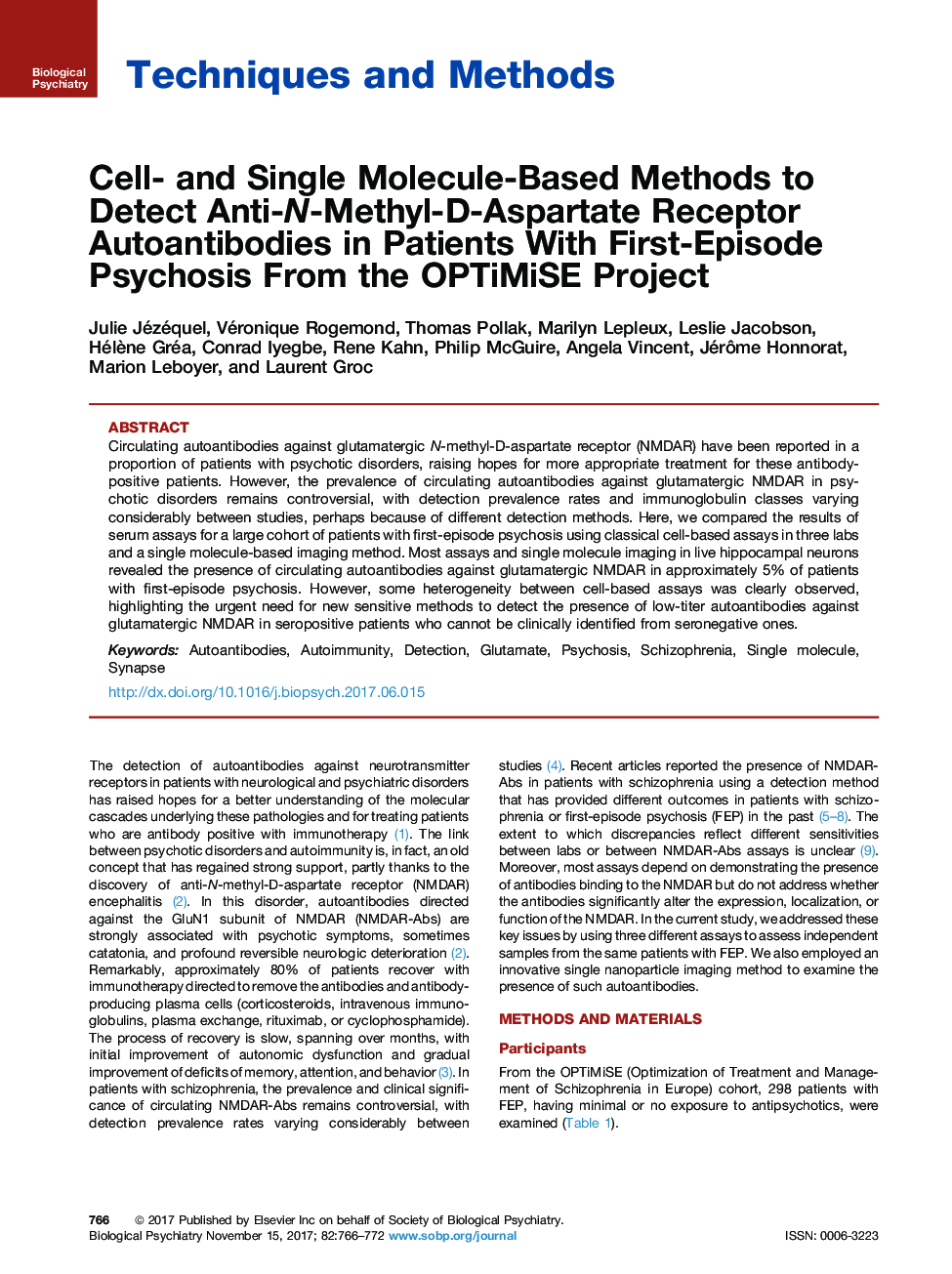| Article ID | Journal | Published Year | Pages | File Type |
|---|---|---|---|---|
| 5720387 | Biological Psychiatry | 2017 | 7 Pages |
Circulating autoantibodies against glutamatergic N-methyl-D-aspartate receptor (NMDAR) have been reported in a proportion of patients with psychotic disorders, raising hopes for more appropriate treatment for these antibody-positive patients. However, the prevalence of circulating autoantibodies against glutamatergic NMDAR in psychotic disorders remains controversial, with detection prevalence rates and immunoglobulin classes varying considerably between studies, perhaps because of different detection methods. Here, we compared the results of serum assays for a large cohort of patients with first-episode psychosis using classical cell-based assays in three labs and a single molecule-based imaging method. Most assays and single molecule imaging in live hippocampal neurons revealed the presence of circulating autoantibodies against glutamatergic NMDAR in approximately 5% of patients with first-episode psychosis. However, some heterogeneity between cell-based assays was clearly observed, highlighting the urgent need for new sensitive methods to detect the presence of low-titer autoantibodies against glutamatergic NMDAR in seropositive patients who cannot be clinically identified from seronegative ones.
